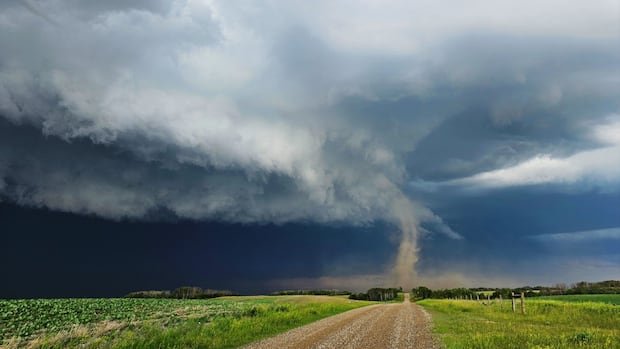Saskatchewan has experienced 17 tornadoes this year, with 10 of them hitting the province in a single day, as reported by a tornado tracking project based at Western University. The tornadoes were mainly concentrated in the southern and central regions of the province, particularly between Estevan and Saskatoon, according to the Northern Tornadoes Project, a research initiative monitoring tornado activity across Canada.
Between June 19-21, 12 tornadoes were recorded, with 10 confirmed on June 19 and two on June 21. Prior to this, two tornadoes touched down near Cut Knife on June 2, followed by another tornado near Stockholm on June 29.
Of the tornadoes on June 19, two were classified as EF-2 on the enhanced Fujita scale, capable of causing significant damage, while three were rated EF-1. The remaining tornadoes were categorized as EF-0, indicating sustained winds of 105 to 137 km/h, which can cause light damage.
According to data from tornado projects, Saskatchewan typically sees around 14 tornadoes annually from 2017 to 2024, although the numbers can vary significantly. For instance, there were 26 reported tornadoes in the province in 2022, followed by only one in 2023 and 19 in the previous year.
So far this year, Saskatchewan has witnessed more tornadoes than the rest of the country combined, with four in Alberta and Quebec each, two in Manitoba and Ontario, and one in British Columbia, according to the tracking project.
Despite the significant tornado activity, there have been no reported fatalities associated with any confirmed tornadoes in Canada this year. David Sills, the director of the Northern Tornadoes Project, noted that the outbreak of tornadoes in Saskatchewan on June 19 was the largest he has observed since the project’s inception in 2017.
The tornadoes on June 19 impacted various areas in Saskatchewan, including Blackstrap Lake, Young, Frobisher, Kronau, South Touchwood, Hubbard, Vibank, and Hirsch. Fortunately, one of the homes hit had special bracing in place, preventing severe damage.
While the exact reason for the surge in tornadoes in Saskatchewan remains unclear, Sills mentioned that extreme heat periods have likely contributed to the phenomenon. He explained that the timing of frontal systems coinciding with peak heating during the day plays a crucial role in tornado formation.
Residents in the affected areas, such as Hubbard, described the aftermath of the tornado, with trees uprooted and farm equipment damaged. Chamberlin and Hanofski shared their experience of witnessing the tornado near their home, emphasizing the destruction caused to their property.
As Saskatchewan enters peak tornado season in June and July, Sills anticipates a decrease in tornado activity as August approaches, with a significant decline in the fall months.


